Bahia’s tourism has made the state one of the most important tourist centres in Brazil. Its many tourist attractions, ranging from the extensive coastline with its paradisiacal beaches to the colonial historical sites, enchant visitors from all over the world.
With a vibrant culture, natural beauty and cities steeped in history and tradition, Bahia’s tourist attractions make it the ideal destination for those seeking leisure, culture and nature all year round.
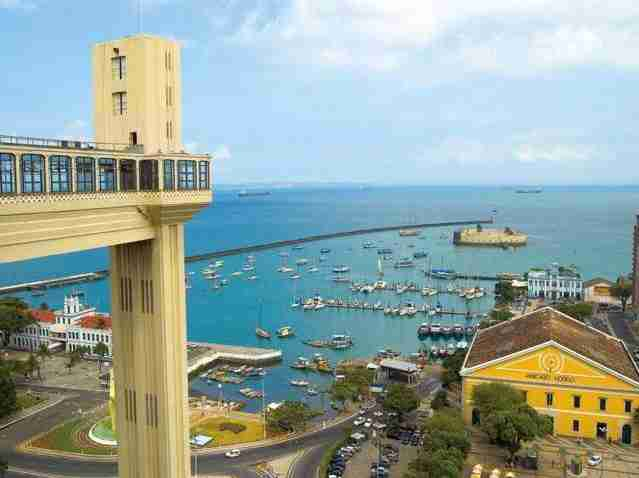
The state has the longest coastline in the country, with approximately 932 kilometres, which represents about 12.4% of the Brazilian coast. This extensive coastline is home to countless paradisiacal beaches and charming villages.
The capital, Salvador, is a major tourist destination, famous for its Carnival, which attracts around 2.7 million revelers over six days of partying. The city’s main attractions include Baía de Todos os Santos, Farol da Barra, Elevador Lacerda and Pelourinho, with its colonial houses and cultural entertainment.
On the north coast of the state is Costa do Sauípe, the largest tourist complex in Brazil, designed for tourism from the start. The region is almost entirely occupied by hotels and resorts, offering a high standard of infrastructure in the midst of exuberant nature.
Videos of Attractions in Bahia
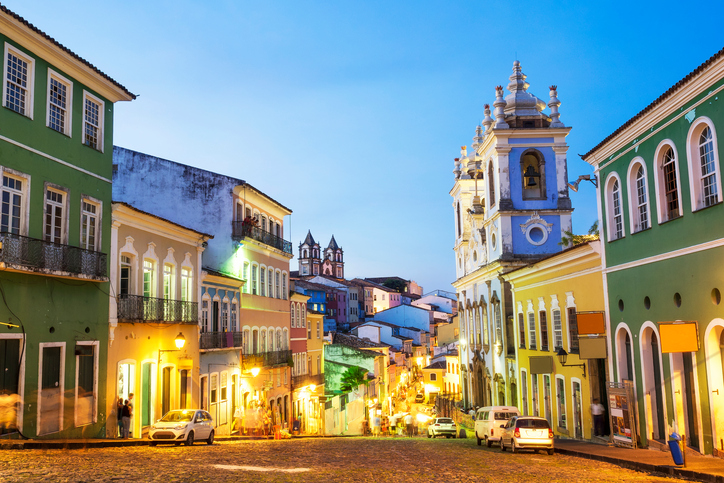

Pontos Turísticos de Salvador da Bahia07:23

Centro Histórico de Salvador da Bahia04:13

10 lugares para conhecer no sul da Bahia09:11

6 LUGARES PARA VISITAR NA PRAIA DO FORTE BA06:51

As belezas da Chapada Diamantina - Guia Turístico03:41
Tourist Attractions in Bahia
1. Salvador de Bahia
Salvador, the capital of Bahia, is one of Brazil’s most vibrant and culturally rich cities, with a strong African heritage, religious syncretism and well-preserved colonial architecture.
Founded in 1549 as the country’s first capital, Salvador enchants with its Historic Centre, recognised as a UNESCO World Heritage Site, its baroque churches covered in gold, its popular festivals such as the Carnival and the Lavagem do Bonfim, and its paradisiacal beaches washed by the Baía de Todos os Santos. A blend of tradition and modernity, the city offers a unique experience of colours, flavours, rhythms and faith.
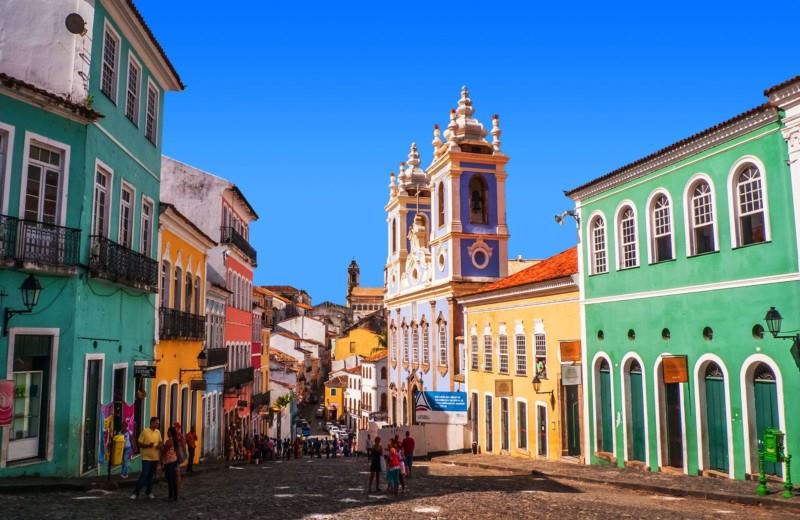
1. Historic Centre (Pelourinho)
- UNESCO World Heritage Site.
- Baroque churches, colonial mansions, museums, workshops and music in the streets.
- Highlights: Church of St Francis, Jorge Amado House Foundation, Pelourinho Square.
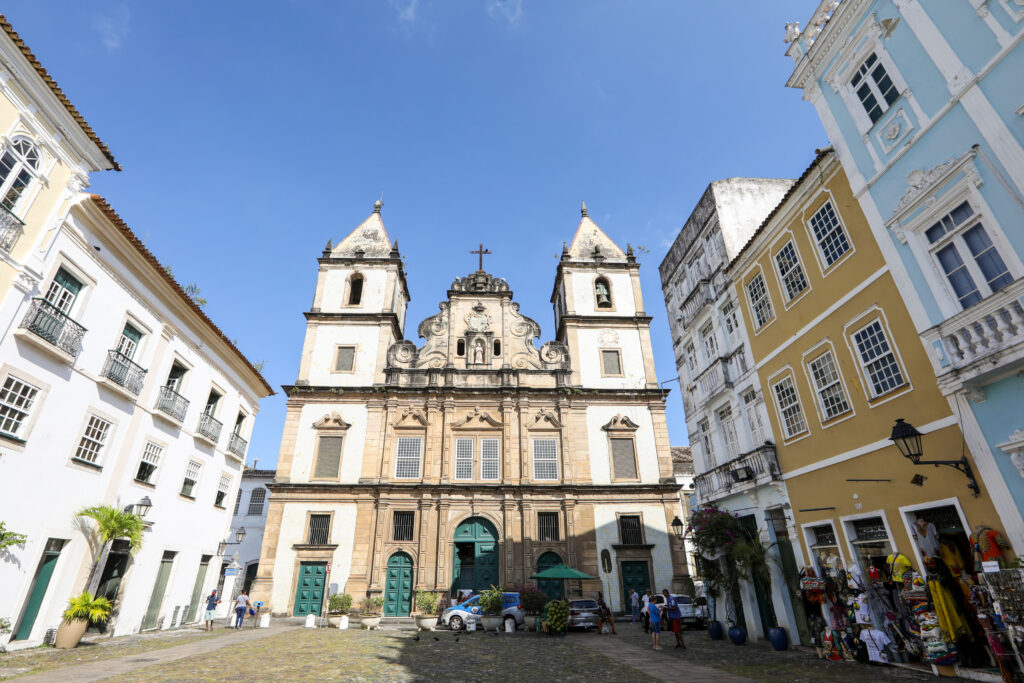
2. Lacerda Lift and Tomé de Souza Square
- Connects the Upper and Lower Towns.
- Spectacular views over the Bay of All Saints.
- Nearby are the Rio Branco Palace, the City Council and the famous Mercado Modelo.

3. Historic churches.
- Church of St Francis: famous for its gold-plated interior.
- Cathedral of Salvador Basilica: Former Jesuit church, full of sacred art.
- Church of Bonfim: A symbol of the Bahian faith, the scene of the traditional Lavagem do Bonfim.
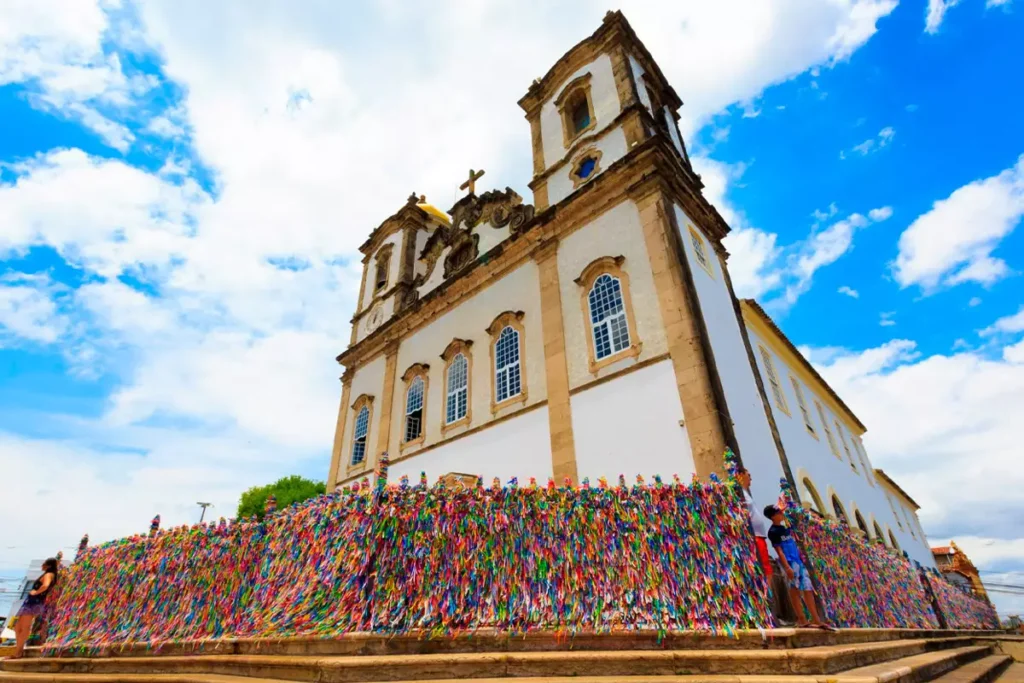
4. Beaches and Orlas.
- Porto da Barra: One of the most beautiful urban beaches in Brazil.
- Farol da Barra: Home to the Fort of Santo Antônio da Barra and the Nautical Museum.
- Flamengo and Stella Maris beaches: Quieter, with clear waters and coconut palms.

5. Museums.
- Bahia Art Museum (MAB).
- Bahia Museum of Modern Art (MAM), in Solar do Unhão, with a beautiful view of the sunset.
- Museu Afro-Brasileiro (Afro-Brazilian Museum), in Pelourinho, showing the African influence in Bahia.
- Tempostal Museum and Casa do Benin: focusing on visual memory and African culture.
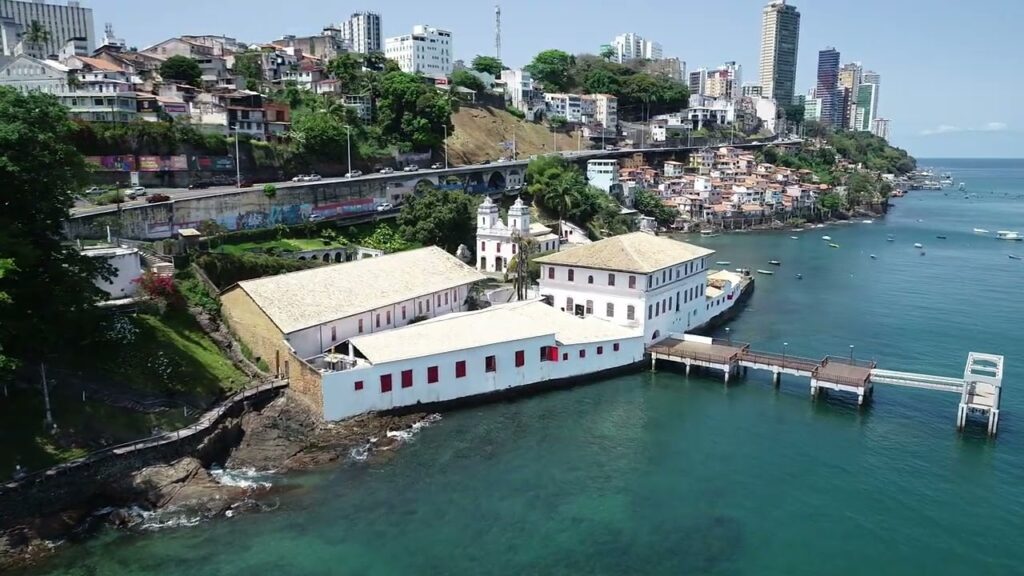
6. Culture and parties
- Rio Vermelho: Bohemian area with bars, parties and Dinha’s Acarajé.
- Salvador Carnival: One of the biggest parties in the world, with electric trios.
- Religious festivals: Iemanjá (2 February), Bonfim, São João.
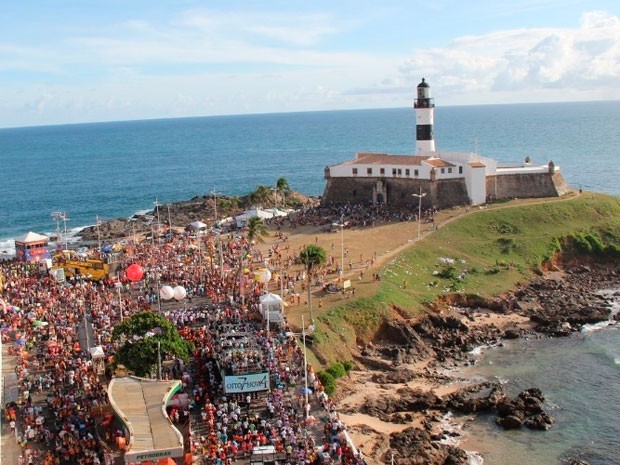
2. Tourist Route of the Bahia Coast
The Bahia Coast is one of the most beautiful in Brazil, with around 1,100 kilometres of beaches, paradisiacal landscapes, charming villages, protected areas and a wealth of culture.
To make travelling easier, the coast is divided into official tourist zones.
1. North coast(Costa dos Coqueiros)
- Praia do Forte: trendy, with the Tamar Project, natural pools and the Garcia D’Ávila Castle.
- Imbassaí: River and sea meet amidst dunes and coconut trees.
- Arembepe: Famous for its hippie community and rustic beauty.
- Costa do Sauípe: A tourist complex with luxury resorts and lush nature.
- Subaúma, Baixio and Mangue Seco: quiet beaches, dunes, coconut trees and lots of nature.
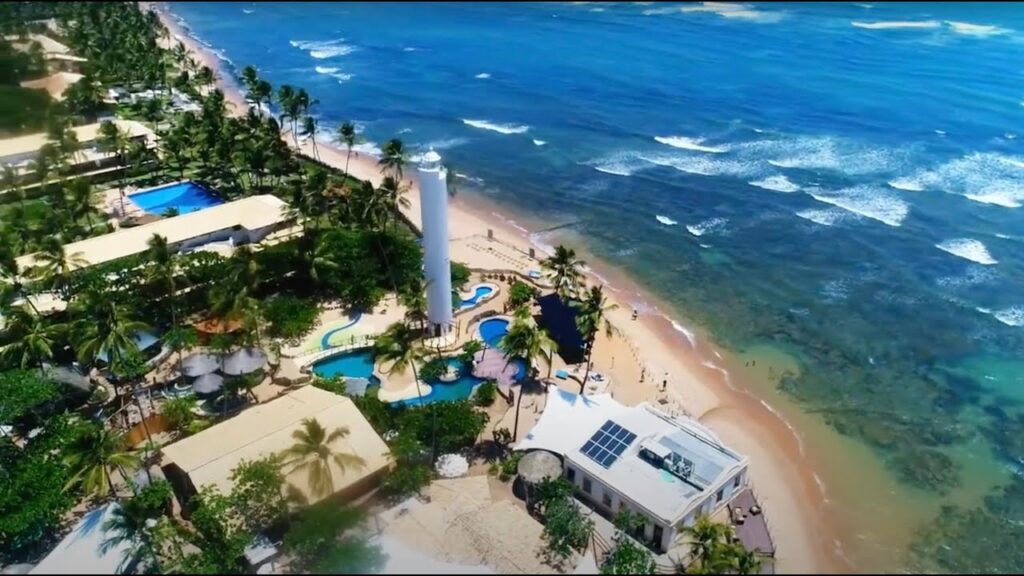
2. Bay of All Saints.
- Salvador: with urban beaches such as Farol da Barra, Porto da Barra, Itapuã and Pelourinho, Afro-Brazilian culture and lively gastronomy.
- Itaparica Island: Accessible by ferry, with quiet beaches and colonial history.
- Ilha dos Frades: Crystal clear waters and nature reserves.

3. South Coast of Bahia
Dendê Coast
- Morro de São Paulo: a young destination with numbered beaches, parties and nature.
- Boipeba: Ideal for those seeking tranquillity and unspoilt landscapes.
- Tinharé Island and Cairu: Hiking trails, ecotourism, diving and local culture.

Cocoa Coast
- Itacaré: Surfing, waterfalls and beaches surrounded by the Atlantic Forest.
- Ilhéus: Land of Jorge Amado, with historic centres and beautiful beaches.
- Serra Grande and Uruçuca: unspoilt landscapes, cliffs and nature.

Discovery Coast
- Porto Seguro: A landmark of Brazil’s discovery, with festivals and beautiful beaches.
- Arraial d’Ajuda: Charming village with old churches and viewpoints.
- Trancoso: Sophistication and beauty in the famous Quadrado.
- Caraíva: Rustic village with sandy streets, river and alternative energy.
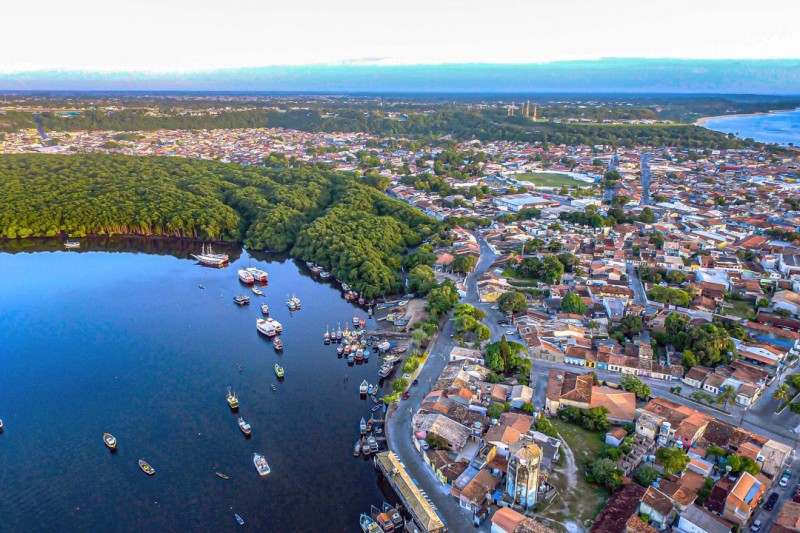
Whale Coast
- Caravelas, Prado, Alcobaça and Nova Viçosa: ideal destinations for those wishing to see the humpback whales that visit the region between July and November. As well as quiet beaches, the region is home to the Abrolhos National Marine Park, one of the best diving spots in Brazil.
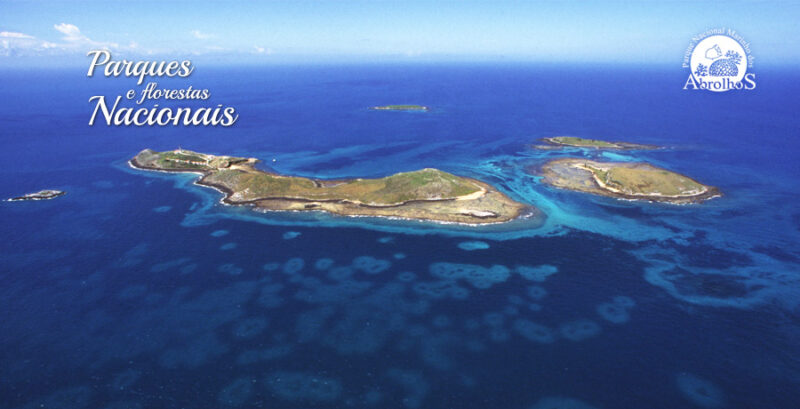
4. Chapada Diamantina: Bahia’s ecotourism paradise
Located in the heart of Bahia, Chapada Diamantina is one of Brazil’s most spectacular destinations for lovers of nature, adventure tourism and local culture. The region is home to the Chapada Diamantina National Park, with landscapes that mix gigantic waterfalls, crystal-clear caves, canyons, valleys, hills, pure water rivers and exuberant vegetation of the Caatinga and Cerrado.

Among the most famous tourist attractions are
- Cachoeira da Fumaça: one of the highest waterfalls in Brazil, with a drop of almost 400 metres.
- Poço Azul (Blue Well) and Poço Encantado (Enchanted Well): caves with crystal clear water and impressive blue colours.
- Morro do Pai Inácio: an iconic viewpoint with panoramic views of the region, perfect for sunsets.
- Pati Valley: Considered one of the most beautiful treks in the Americas, ideal for those who enjoy adventure and solitude.
- Gruta da Lapa Doce, Pratinha and Gruta Azul: rock formations and transparent waters of surreal beauty.
- The main bases for exploring the Chapada are the towns of Lençóis, Vale do Capão, Igatu, Mucugê, Andaraí and Palmeiras, each with its own charm and tourist structure. Lençóis, for example, is listed by IPHAN and preserves colonial houses, as well as being the best known gateway to the park.

6. Bahian cuisine
Bahian cuisine is one of the richest and most expressive in Brazil, famous for its intense flavours, vibrant colours and strong African, indigenous and Portuguese heritage. Although its origins are concentrated in the Recôncavo Baiano and the state’s coastline, its dishes have conquered the taste buds of the whole country – even if they are not the most commonly consumed dishes outside Bahia.
Based on striking ingredients such as palm oil, coconut milk, ginger, cashew nuts and a wide variety of peppers (used sparingly or intensely, depending on taste), Bahian cuisine offers an explosion of flavours in every dish.
Among the most traditional dishes are
- Acarajé: a fried black-eyed bean fritter stuffed with vatapá, dried shrimp and salad.
- Abará: Similar to acarajé, but steamed and wrapped in a banana leaf.
- Vatapá: Cream made with bread, shrimps, peanuts, chestnuts and palm oil.
- Caruru: Okra dish with dried shrimps and strong spices.
- Moqueca baiana: Fish cooked in palm oil, coconut milk, peppers and coriander.
- Bobó de camarão, fish stew and sarapatel are also popular.
For sweets, try the traditional cocadas, quindins, cassava cakes, sweet mungunzá and plantain jam with cloves and cinnamon.
Bahia’s cuisine is not just food: it is cultural heritage, it is celebration, it is religiosity and it is emotional memory – especially in the trays of baianas de acarajé, declared Intangible Heritage of Humanity.
7. Religious tourism in Bahia
Bahia is one of Brazil’s most fascinating destinations for those seeking faith, history and culture. With a strong Catholic tradition and the influence of African religions, the state offers unique experiences of spirituality and religious syncretism. Check out the key points to help you plan your itinerary:
1. Salvador – Capital of Faith and Religious Diversity
In Brazil’s first capital, visitors will find a rich religious heritage:
- Basílica do Senhor do Bonfim – an icon of Bahian faith and the site of the traditional Lavagem do Bonfim.
- Church and Convent of São Francisco – famous for its interior covered in gold and baroque art.
- Sister Dulce Sanctuary – dedicated to the Bahian saint, with a museum and oratory.
- Cathedral of Salvador Basilica – imposing historic temple in Terreiro de Jesus.
- Casa de Iemanjá – a temple in Rio Vermelho that celebrates the Queen of the Sea, the symbol of Candomblé.

2. Bom Jesus da Lapa – The pilgrimage capital of Bahia
Located on the banks of the São Francisco River, Bom Jesus da Lapa is one of the largest pilgrimage centres in Brazil.
- Every year in August, the Bom Jesus Pilgrimage takes place, bringing together thousands of believers in an atmosphere of faith and devotion.
- The highlight is the Sanctuary carved into the rock, known as the Grotto of Bom Jesus, a scene of strong spiritual symbolism.
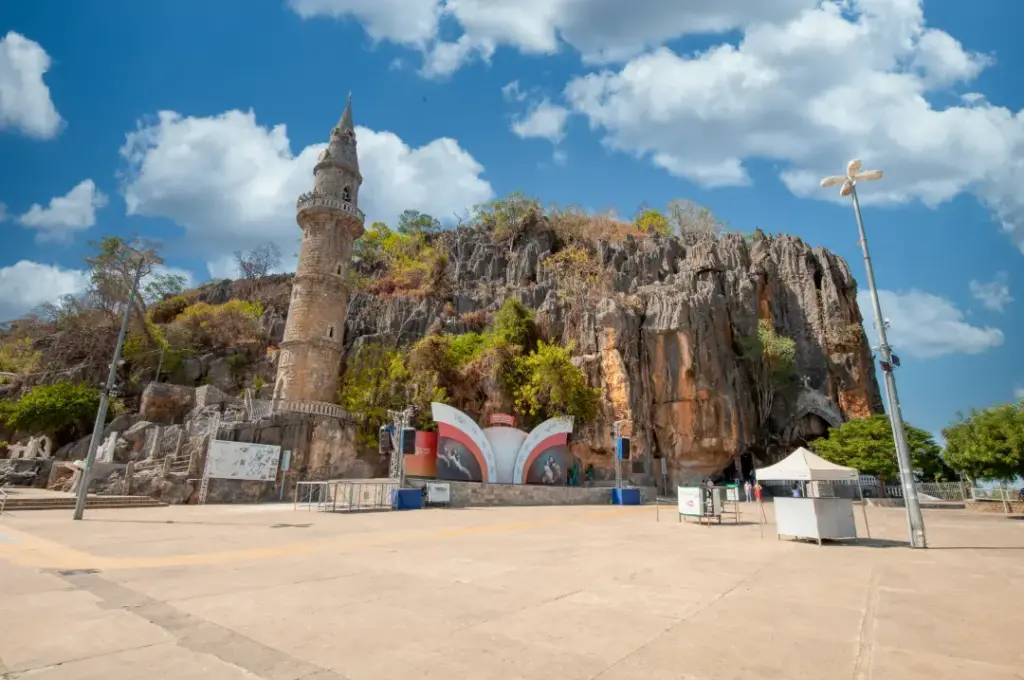
3. Candeias – Devotion in the Recôncavo Baiano
- Visit the Sanctuary of Our Lady of Candeias, a place of faith and tradition in the Recôncavo Baiano.
- The town attracts pilgrims and tourists seeking moments of peace, prayer and contact with the sacred.
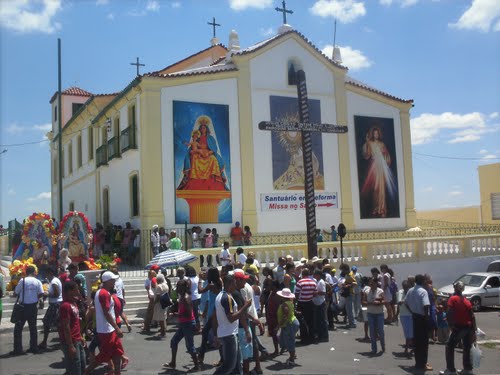
Bahia.ws is the largest tourist guide to Bahia and the Brazilian Northeast.
Publicações Relacionadas
Musical styles, rhythms, singers and composers of northeastern Brazil
History of Afro-Brazilian Religions: Candomblé and Umbanda
Extreme sports in the Northeast of Brazil: Destinations not to be missed
The Baianas' costume is influenced by African culture
Influences and main dishes of northeastern cuisine
Church and Convent of Santa Clara do Desterro and its History in Salvador
Exploring Capoeira in Salvador: A Martial Art Rich in History
História da Arte - Caracteristicas, Aspectos e Periodos
Best Beaches in Bahia: Your Guide to Paradise
Beaches near Salvador de Bahia that you should visit
Discover the nudist beaches of the Northeast and Brazil
Historic Towns in Bahia: A Journey Through Time
History of Baroque Architecture in the Northeast and Minas Gerais
Tourist areas in the state of Bahia
The rhythm of Candomblé in Bahia
The culture of Northeastern Brazil: how it originated, influenced and flourished
Tourist Destinations in Northeast Brazil You Must Visit
Canudos War - Bahia revived the village of Canudos
This post is also on:
![]() Português
Português ![]() English
English ![]() Deutsch
Deutsch ![]() Español
Español ![]() Français
Français



















